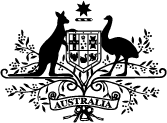Among the emotion of 16,000 fans, who sold-out a basketball stadium for a singular purpose, the need to act became clear.
The collective outpouring of gratitude at the Sydney SuperDome was a reaction to a trailblazer's swansong as Lauren Jackson saluted her green and gold finale with a World Cup bronze medal.
As confetti fell, arguments dismissing the popularity of women's sport as a phase were silenced. Hopefully for good.
Women's sport and female athletes are now embedded in the soul of Australia and it's time our systems provided better support.
It's time to create more environments for women that propel them to greatness, more pathways for female leadership, more incentives for girls to pursue sporting passions, more mechanisms that protect our vulnerable, more professional competitions that foster talent, and an eco-system where genders are treated equally.
The facts are now indisputable.
Cricketing all-rounder Ash Gardner just earned $558,000 dollars overnight in the WPL and that was before her strong performance in Australia’s sixth World Cup victory this week.
WNBA team, the Seattle Storm, has just been valued at a record $151 million dollars after a minority stake sale.
The Matildas are now considered the fourth most popular sporting team in Australia, ahead of several national men’s teams, as outlined in the Futures Sport and Entertainment’s market landscape tracker.
Sam Kerr’s side should be in the top three when the FIFA Women's World Cup kicks off in July.
Our greatest Olympian is Emma McKeon.
So many of our Olympic superstars are women, despite a lack of support compared to male counterparts. From Dawn Fraser to Cathy Freeman, Louise Sauvage to Ariarne Titmus, it is women we often associate with the Olympics and Paralympics. In Tokyo, almost 54 per cent of the team was female and that gap is expected to increase in Paris next year.
So why, with so much in-competition success, do I see a reluctance to seriously fund and support women's sport? Why do I see programs funded but not structural change.
Our Trans-Tasman neighbours are years ahead through their Women and Girls in Sport Strategy. New Zealand's program is shaped around three pillars: leadership, participation, and value and visibility. The strategy is designed to empower women and girls through marketing campaigns, activation funds, female leadership pathways, board gender equity and key indicator measures to track progress.
The Australian people's support for female athletes has set the example for institutions to follow. To date, government has used reactionary ad-hoc programs to fill gaps. We actually need to surgically repair systems rather than slap band-aids on wounds haphazardly.
We are in the green and gold decade and must create structures that lift and support women in sport rather than retro-fit females into a system designed for males.
The average Olympian and Paralympian is 23 years old so what are we doing to ensure the 13-year-old's of today, like champion skateboarder Chloe Covell, have the support to thrive at Brisbane 2032?
Australia spends millions of dollars to support needed diversity programs including the Sport4All pilot, funding First Nations community participation in AFL training and competitions across the Northern Territory and the Sporting Schools Program that has provided almost 800,000 participation opportunities for Aboriginal and Torres Strait Islander children.
However, we must do more.
I seek a sporting eco-system where a female achieving success isn't seen as a trailblazer but just an exceptional athlete.
